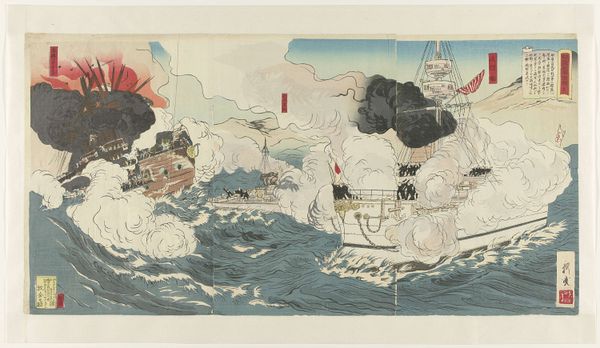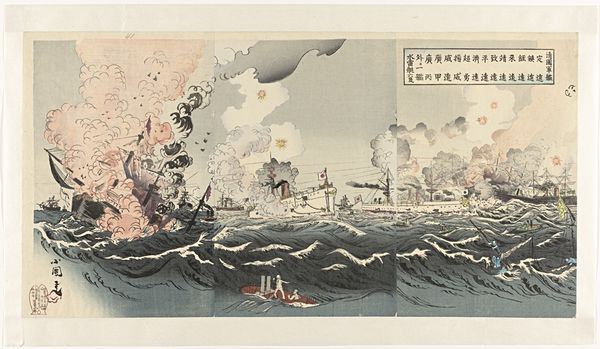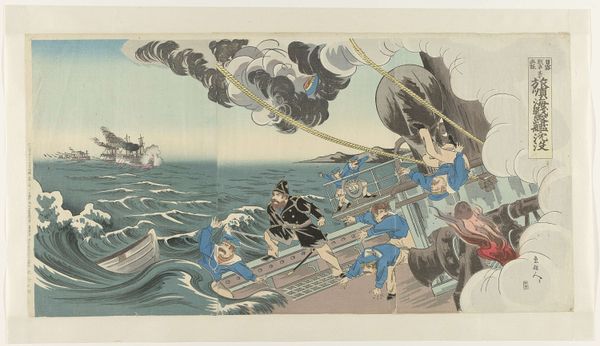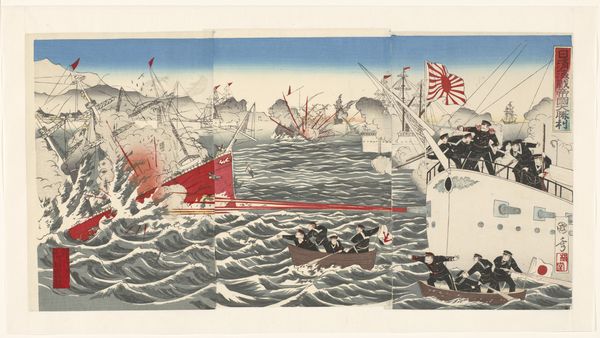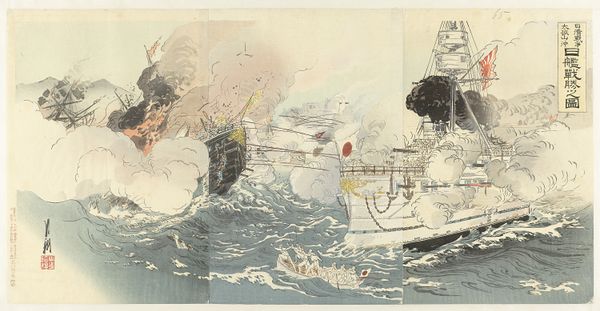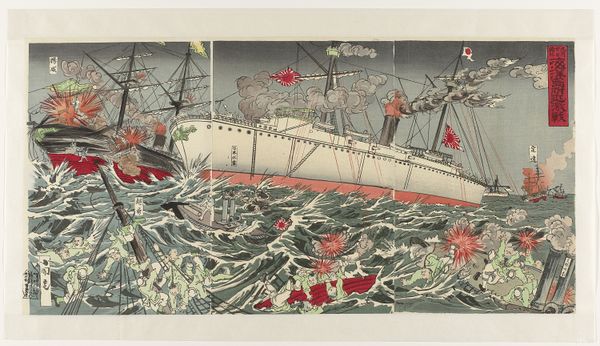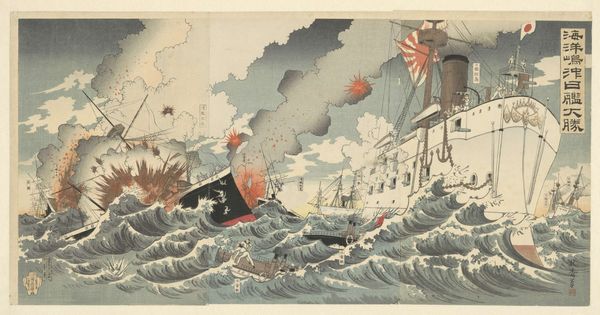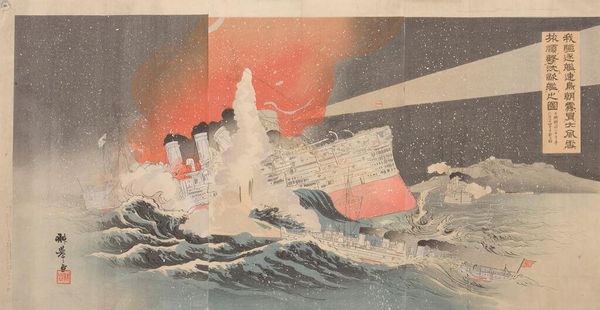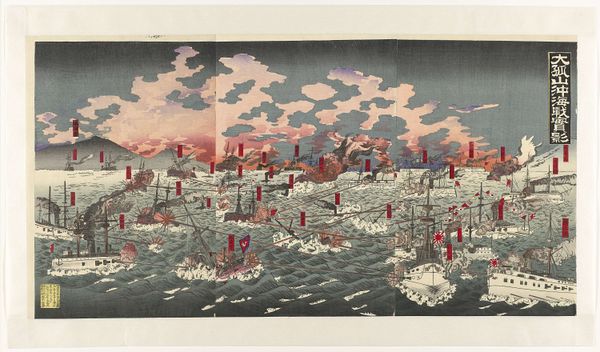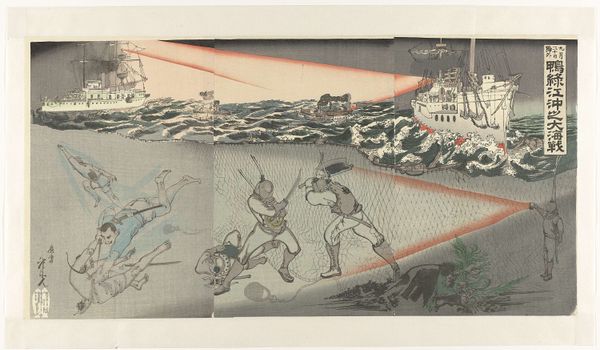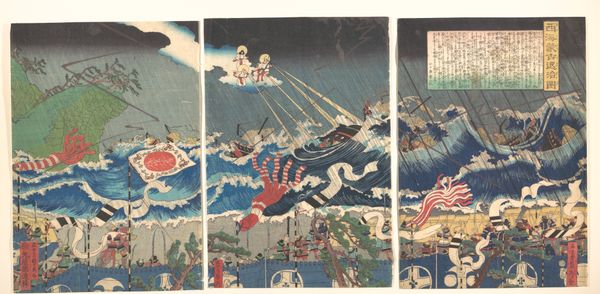
Dimensions: height 373 mm, width 754 mm
Copyright: Rijks Museum: Open Domain
Curator: This is "De grote zeeslag bij de ingang van de haven van Port Arthur," or "The Great Naval Battle at the Entrance to Port Arthur Harbour," a woodblock print made in 1904. Editor: My first impression is chaos—a controlled chaos, but still. There’s fire, smoke, jagged edges everywhere. The waves are these intense, repetitive curls. It’s really quite dramatic. Curator: Indeed. As an example of *ukiyo-e*, or "pictures of the floating world," this print demonstrates the style's adaptability to contemporary events. It depicts a key naval battle of the Russo-Japanese War, offering insight into how war was both perceived and consumed through popular media at the time. Editor: And what of the printmaking process itself? Looking closely, you can see the distinct lines carved into the woodblock, defining the shapes of the ships and the turbulent water. The flat planes of color, presumably applied by hand, also show the laborious process involved. I wonder, were these mass produced? And what did these cost at the time? Curator: Ukiyo-e prints were indeed produced in relatively large quantities, making them accessible to a wider audience. They functioned as both news illustration and artistic representation. What interests me here is how an event deeply connected with imperialist ambitions became transformed into something resembling a folk art tradition for widespread consumption. The depiction feels almost celebratory, a visualization of the triumph of a new industrialized Japan. Editor: It's fascinating to see that contrast—the grim reality of naval warfare filtered through the lens of Japonisme, finding its way into western aesthetics at the turn of the century. Consider, too, how the subject matter—war and maritime power—serves the goals of social messaging, emphasizing patriotism and solidifying imperial ideologies within public opinion. Curator: Yes, that relationship between statecraft and aesthetics cannot be understated. The success of such images hinged on its mass reproducibility and appeal across social strata. Editor: Understanding its social context, examining its material creation, has really helped me connect with it. Curator: Exactly, recognizing this work as more than just art, but also a historical document embedded with social, political and material information helps unlock its meanings.
Comments
No comments
Be the first to comment and join the conversation on the ultimate creative platform.

